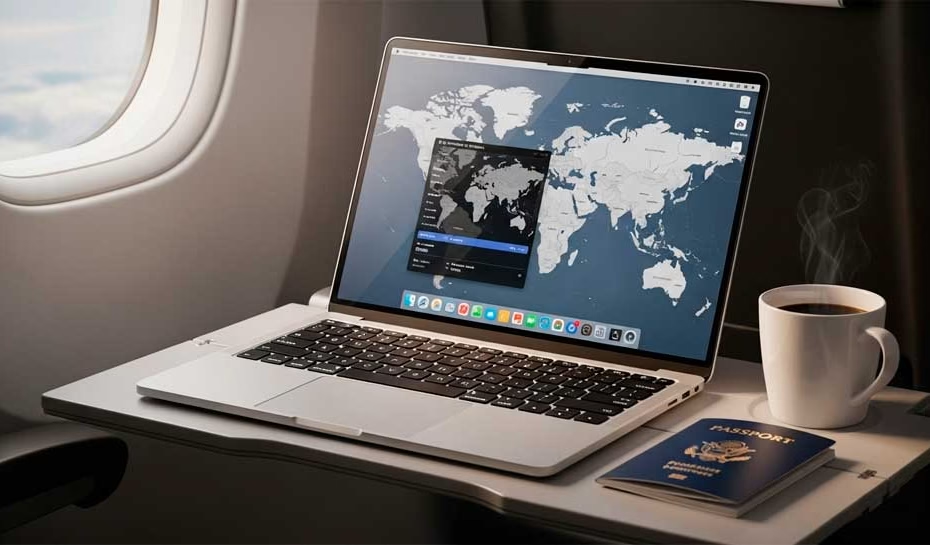Traveling with the wrong laptop can drain your energy before your trip even starts. If you’ve ever sprinted through an airport with an aching shoulder, tried to open a bulky machine on a cramped tray table, or hunted for an outlet in a crowded terminal, you already know the pain. That’s why lightweight laptops for travel have become essentials: they deliver real performance in a slim, carry-on-friendly package that keeps you productive, comfortable, and far less stressed on the move.
The truth is simple: airport lines, tight seats, and long days reward anything light and punish everything else. A good travel laptop isn’t a luxury—it’s the difference between gliding through your itinerary or dragging yourself from gate to gate.
Why a Lightweight Laptop Changes Your Trip
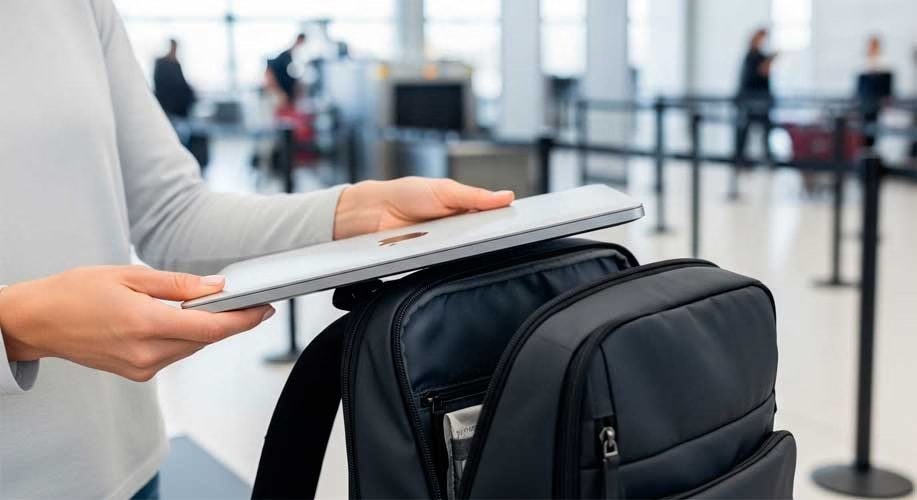
The airport-to-airplane reality
A compact laptop makes the whole journey easier:
- Security lines move faster when you can slip your device in and out of your bag without wrestling with it.
- Planes, trains, and buses are easier to work in when your device fits on tiny tray tables without stealing room from your drink, passport, or phone.
- Cafés and co-working spaces feel less cramped when your setup is small and tidy.
If you travel often, these little moments matter more than specs on a sheet—they’re about energy saved.
The travel comfort formula
What actually impacts comfort on the road?
- Weight: Under 3 lb (≈1.4 kg) is the sweet spot; under 2.5 lb (≈1.13 kg) feels almost effortless.
- Thickness: Thin designs slide into sleeves easily and take up less space.
- Battery life: Enough for a long flight of mixed use—think documents, browsing, and maybe a call before takeoff.
- Ports: USB-C with Power Delivery is now non-negotiable. A couple of USB-A ports or a card reader reduce dongle dependence.
What to Look For: Specs That Matter on the Road
Weight Targets: Under 3 lb vs Under 2.5 lb
- Under 3 lb: Ideal balance for most travelers; wider choice of models and bigger batteries.
- Under 2.5 lb: Truly featherweight, great for minimalist or one-bag travel—just know you may give up ports or battery size.
Battery Life You Can Trust
Manufacturers often quote lab-perfect numbers that don’t match real life. What matters more is efficiency. Prioritize:
- modern, low-power processors
- well-optimized software
- reviews that highlight real-world endurance
And always pack a tiny 65W USB-C GaN charger. It’s universal, lightweight, and will save you from hunting outlets during layovers.
Displays: OLED vs IPS, Brightness, and Glare
- OLED: Rich colors and deep contrast—fantastic for movies and photo editing. Can use more power at high brightness.
- Matte IPS: Better in bright environments like airport lounges or sunlit cafés. Often more efficient for writing and browsing.
- Brightness: Aim for 400 nits or more if you work outdoors or near windows.
Ports and Charging: Keep It Simple
- USB-C PD on one or both sides makes charging convenient.
- A small USB-C hub with HDMI + USB-A + SD/microSD keeps your setup flexible without turning your bag into a dongle farm.
The Best Lightweight Laptops for Travel (By Scenario)
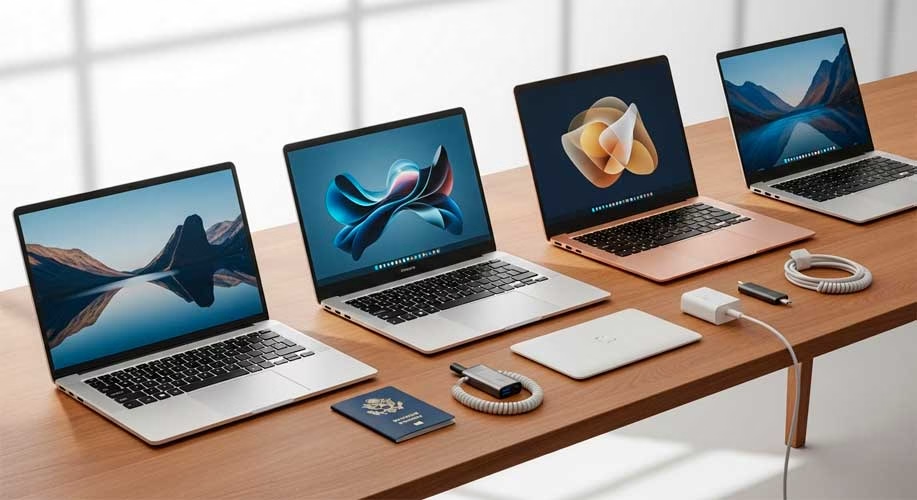
Best for Most People: Asus Zenbook 14 OLED

Why it travels well:
A balanced 14-inch ultralight with great battery efficiency, a vivid OLED panel, and a comfortable keyboard. It’s a strong all-rounder for students, freelancers, and business travelers.
Watch for:
Glossy OLED reflections—bring a microfiber cloth.
Best 2-in-1: Lenovo Yoga 9i (14-inch)
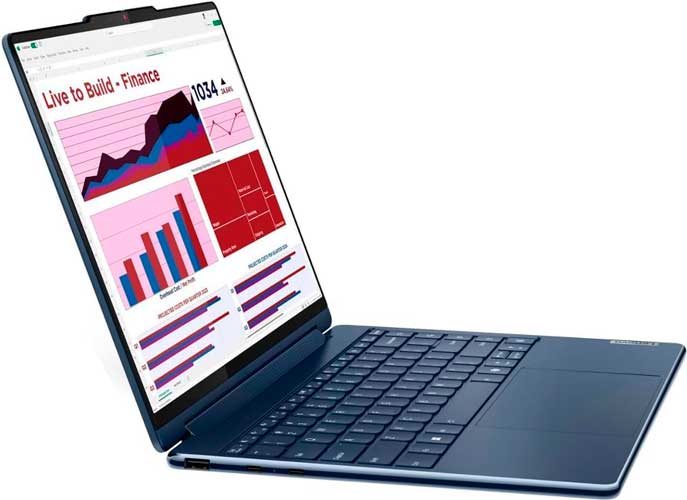
Why it travels well:
It bends into tablet mode—perfect on tight flights—has a sturdy hinge, excellent speakers, and a crisp touch display for note-taking or signing PDFs on the go.
Watch for:
Pen availability varies by region.
Best for Business Travelers: ThinkPad X1 Carbon / X1 Nano
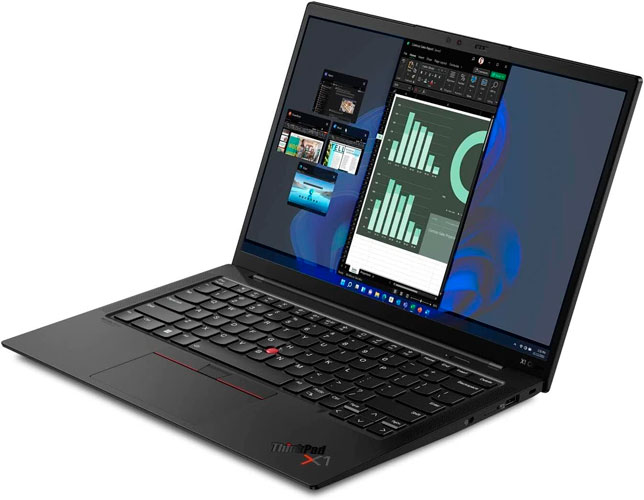
Why they travel well:
Legendary keyboards, bright matte screens, durable construction, and top-tier support options worldwide. The X1 Nano is dramatically lighter if you prefer a smaller footprint.
Watch for:
RAM and storage often aren’t upgradeable—choose wisely at purchase.
Best Budget Option: Acer Swift Go 14
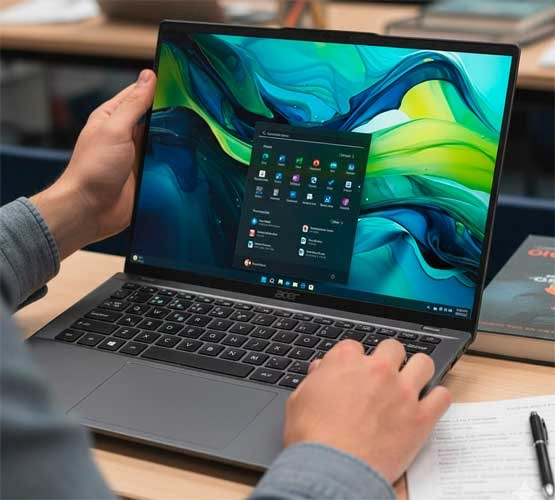
Why it travels well:
Strong performance for the price, modern features, and a surprisingly light chassis. A great pick for students or digital nomads on a budget.
Watch for:
Display and SSD options vary—get the brighter panel.
Best for macOS Fans: MacBook Air (13″ or 15″, M-series)

Why it travels well:
Superb battery life, silent operation, and a thin design that disappears in your bag. If you use iPhone or iPad, the ecosystem perks on the road are huge.
Watch for:
Only two USB-C ports—plan for a small hub.
Best for Big Screens Without the Weight: LG Gram (14/16/17)
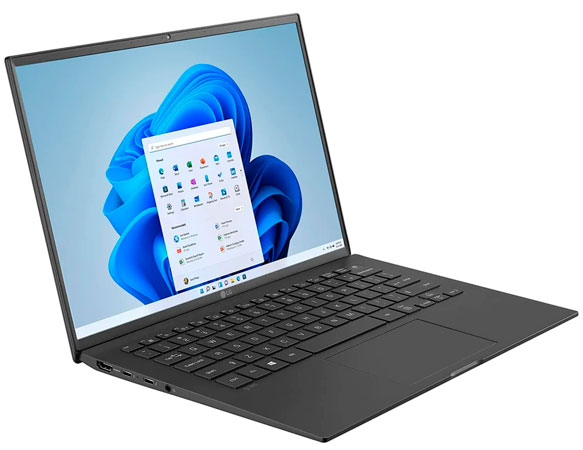
Why it travels well:
Impressively light even at large sizes. Great if you want lots of screen real estate for multitasking or creative work—but without a heavy backpack.
Watch for:
Bigger screens take more tray-table space.
Windows or Mac on the Move?
Windows
Great if you need:
- niche corporate software
- touchscreens or 2-in-1 designs
- more hardware variety and pricing flexibility
macOS
Great if you value:
- industry-leading standby time
- tight integration with iPhone/iPad
- excellent performance per watt
Neither is objectively better—choose the ecosystem that fits your workflow.
Pro Tips to Travel Lighter With Any Laptop
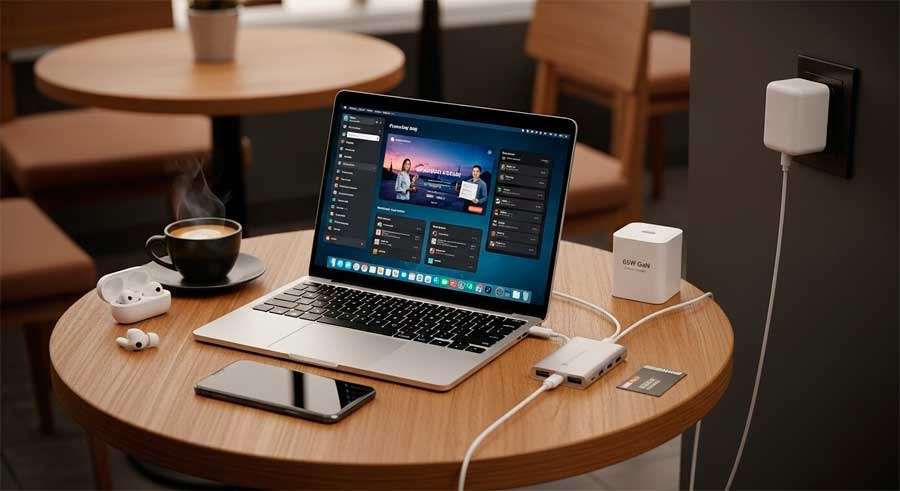
One-Cable Charging
Carry a 65W USB-C GaN charger with interchangeable plugs and a long cable. It powers your laptop, phone, tablet, and even some cameras.
Compact Hubs and Cloud Workflows
A palm-size USB-C hub keeps ports minimal. Store heavy files in the cloud and keep only what’s essential offline.
Smart Backups
- Use a small external SSD for daily backups.
- Offload camera cards nightly and label them by date.
- Pre-download important files before flights so airplane mode doesn’t stop you from working.
Quick Reference: Which Lightweight Laptop Fits You Best?
| Priority | Pick | Why It’s Travel-Friendly |
|---|---|---|
| Best overall | Asus Zenbook 14 OLED | Light, efficient, excellent display |
| Versatility | Lenovo Yoga 9i | 2-in-1 flexibility for tight spaces |
| Business travel | ThinkPad X1 Carbon/Nano | Elite keyboard, matte options, rugged build |
| Budget | Acer Swift Go 14 | Modern features without the price spike |
| macOS | MacBook Air (13/15) | Long battery, silent, lightweight |
| Featherweight | Fujitsu UH-X | Extreme portability |
| Big screen | LG Gram | Large displays with minimal weight |
FAQs: Weights, Chargers, and Real Battery Life
What’s a good travel weight target?
Under 3 lb is great; under 2.5 lb is exceptional for one-bag travel.
How much real-world battery life is enough?
Enough to survive your longest flight with mixed use. A compact GaN charger solves most battery anxiety.
Do I need USB-A or SD ports?
Not necessarily. A small USB-C hub covers everything while keeping the laptop lighter.
Is OLED ideal for travel?
Great if visuals matter. For long writing sessions or bright environments, matte IPS may be easier on the eyes.
Conclusion
The best lightweight laptops for travel are the ones you barely notice until you need them. Stick to sub-3-pound machines with efficient hardware, bright screens, and USB-C charging. Pair them with a pocket-size GaN charger and a tiny hub, and you’ll glide through airports, stay productive in tight spaces, and land with more energy for the trip that actually matters.
